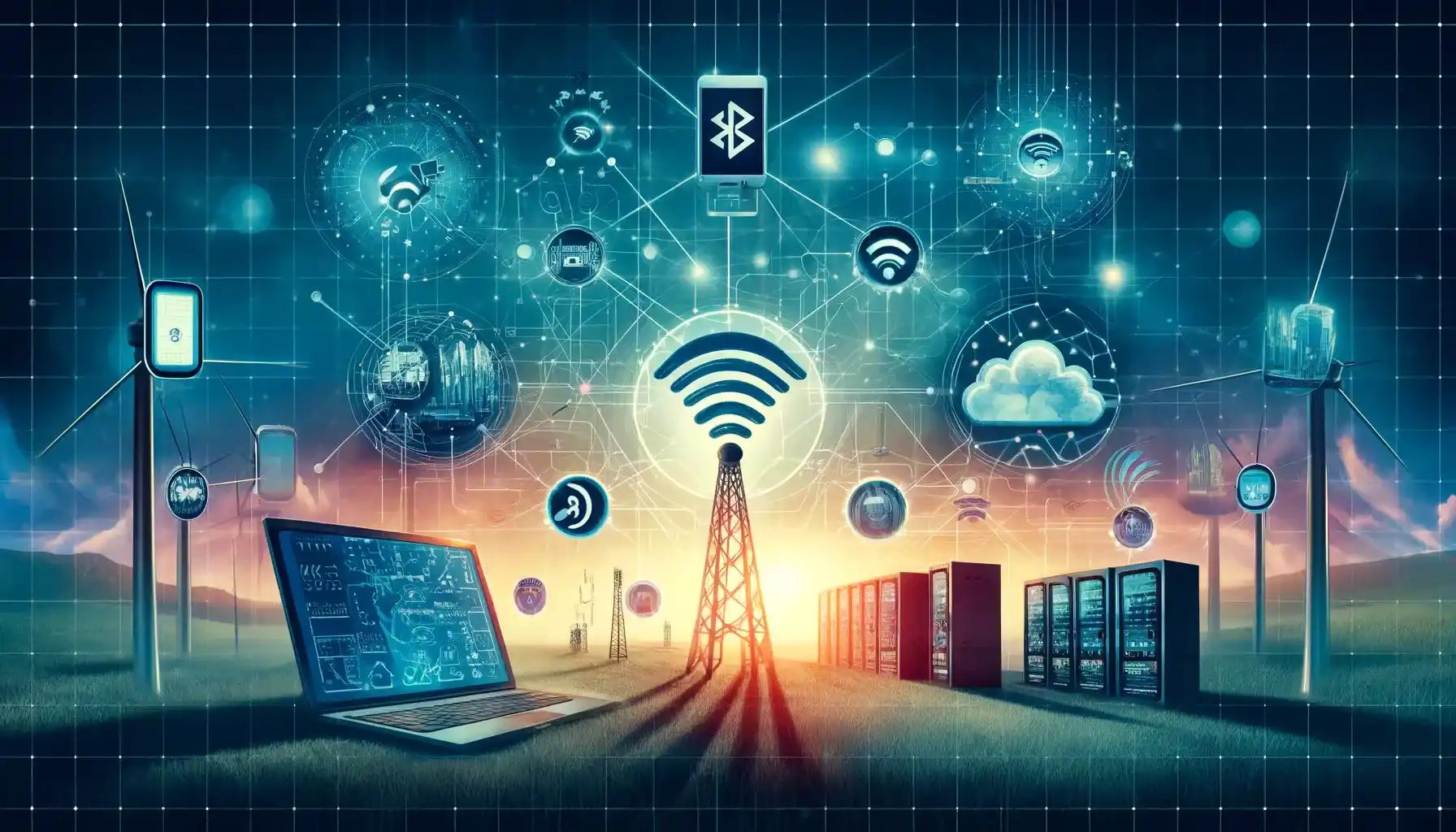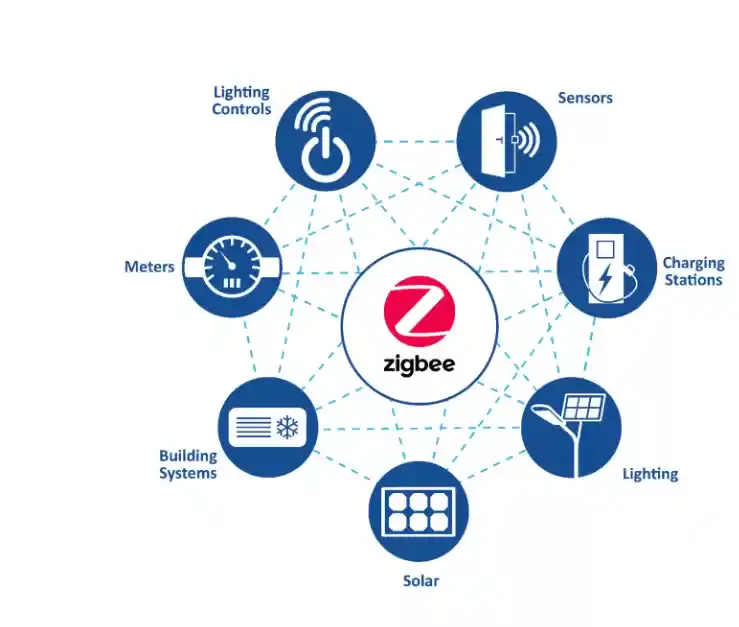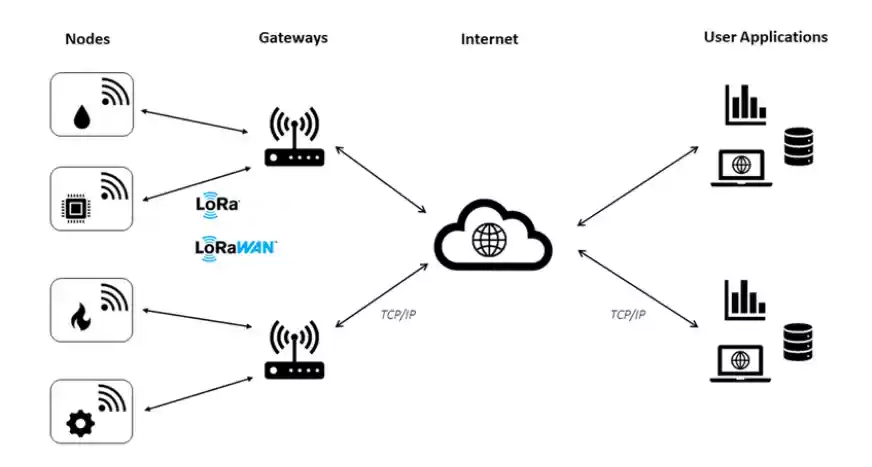Table of Contents
IoT connectivity is fundamental to the functioning of the Internet of Things, enabling smart devices and sensors to communicate with processing units to execute their designed tasks.
With projections estimating over 29 billion connected devices by 2027, the landscape of IoT connectivity technologies is rapidly expanding, driving innovation and efficiency in numerous industries. This growth underscores the critical role that IoT connectivity plays in the scalability and effectiveness of smart technologies.
Exploring IoT Connectivity: Understanding the Top 6 Technologies
Choosing the right IoT connectivity option for devices can be daunting given the myriad of available technologies. Each connectivity method, whether short-range or long-range, wired or wireless, offers unique advantages and challenges. This article provides a comprehensive guide to the six most popular IoT connectivity technologies, helping you make informed decisions for your IoT Connectivity ecosystem.
1. Wi-Fi
Wi-Fi plays a pivotal role in the Internet of Things (IoT), accounting for 31% of all IoT connections. It enables devices to communicate over the internet without the need for physical wiring, which simplifies the deployment process and allows for flexibility in the placement and mobility of devices within a network.
Pros of Wi-Fi in IoT Connectivity:
- Fast Data Transfer: Wi-Fi provides high-speed internet connectivity, which is essential for transmitting large amounts of data quickly between devices in an IoT ecosystem.
- Easy Setup: Setting up a Wi-Fi connection is relatively straightforward, requiring minimal technical skills. Most devices are equipped with Wi-Fi capabilities and can be connected with simple configuration steps.
- Cost-Effectiveness: Compared to other connectivity options, Wi-Fi infrastructure is generally less expensive to set up and maintain, especially in environments where it is already in place.

Cons of Wi-Fi in IoT:
- High Power Usage: Wi-Fi connectivity typically consumes more power compared to other wireless technologies like Bluetooth or Zigbee, which can be a drawback in battery-operated or energy-sensitive applications.
- Limited Range: The effective range of a Wi-Fi network is about 35 meters indoors, which can be limiting in larger environments unless extenders or additional access points are used.
- Susceptibility to Network Congestion: Wi-Fi networks can suffer from congestion, especially in areas with many devices connected to the same network. This can lead to interference and reduced performance, impacting the reliability of IoT applications.
2. Bluetooth
Bluetooth technology is a cornerstone in the Internet of Things, accounting for 27% of all IoT connectivity. This widespread adoption is largely due to its effectiveness in enabling short-range communication between devices, such as smartphones pairing with wearables like fitness trackers or smartwatches.
Pros of Bluetooth:
- Low Power Consumption: Bluetooth is designed to consume minimal power, which extends the battery life of connected devices, making it ideal for mobile or wearable IoT applications.
- Cost-Effectiveness: Bluetooth technology is relatively inexpensive to implement, which lowers the entry barrier for developing and deploying Bluetooth-enabled IoT devices.
- Ease of Setup: Setting up Bluetooth connections is straightforward, usually involving minimal user input, which enhances the user experience and facilitates seamless device integration.

Cons of Bluetooth:
- Lower Bandwidth: Compared to other wireless technologies such as Wi-Fi, Bluetooth offers less bandwidth, which can limit the speed and volume of data transmission.
- Limited Range: Typically, Bluetooth can reliably connect devices within a range of up to 10 meters (about 33 feet) without obstructions, which may be insufficient for larger environments without the use of additional signal boosters or repeaters.
3. Cellular Networks
Cellular networks form the backbone of about 20% of IoT connections. These networks, encompassing a range of technologies from 2G to the latest 5G, along with specialized IoT protocols like LTE-M and NB-IoT, are fundamental in environments where reliability and extensive geographic coverage are paramount.
Pros:
- Broad Coverage: Cellular networks provide extensive coverage that spans urban, suburban, rural, and even remote areas, ensuring IoT connectivity devices can connect virtually anywhere.
- High Reliability and Speed: Cellular technologies are known for their reliable connections and the ability to transmit data at high speeds, which is crucial for real-time applications.
- Scalability: As IoT deployments grow, cellular networks can easily scale to accommodate more devices without the need for significant infrastructure change

Cons:
- High Power Consumption: Cellular devices typically consume more power, which can be a challenge for battery-operated or remote IoT connectivity devices.
- Potential Latency Issues: While technologies like 5G have significantly reduced latency, older cellular technologies may still experience delays, affecting applications that require real-time data.
4. Zigbee
Zigbee stands out in the realm of IoT connectivity technologies for its ability to form efficient mesh networks that enhance device-to-device communication. Its structure is designed for low-power operation, making it ideal for various IoT connectivity applications that require reliability without high energy consumption.
Pros:
- Energy Efficiency: Zigbee is highly optimized for low power consumption, which makes it suitable for scenarios where devices need to operate on battery power for extended periods.
- Reliability: Due to its mesh network architecture, each node in the network can transmit and receive messages, thereby increasing the network’s overall reliability. If one node fails, data can still find its way to the destination via alternative paths.

Cons:
- Limited Range: Individual Zigbee devices typically have a range of 10 to 100 meters, depending on environmental conditions. While the mesh capability extends coverage by passing data through intermediate devices, the initial range per device is still limited.
- Complex Setup: Establishing a Zigbee network can be more complex than simpler systems like Wi-Fi or Bluetooth. It requires careful planning of node placements and network topology to ensure optimal performance.
5. LoRaWAN
LoRaWAN stands for Long Range Wide Area Network and is a prominent choice among Low Power Wide Area Network (LPWAN) technologies, designed to connect low-bandwidth, battery-powered devices over long distances in various environments.
Pros:
- Exceptional Range: LoRaWAN can communicate signals up to 15 kilometers in rural areas and 2 to 5 kilometers in urban settings, making it ideal for spanning large geographical areas without the need for multiple repeaters.
- Low Power Usage: Devices connected via LoRaWAN can run on battery power for years without a replacement, thanks to the technology’s ability to operate at low power. This feature is crucial for IoT connectivity applications where frequent battery changes are impractical.
- Cost-Efficiency: Because it requires fewer base stations to cover large areas and operates on free unlicensed frequencies, LoRaWAN reduces the infrastructure and operational costs compared to other wide-area networking options.

Cons:
- Low Bandwidth: LoRaWAN is optimized for low data rate applications, typically handling messages smaller than 250 bytes. This makes it unsuitable for applications requiring large data transfers, such as video streaming or complex real-time analytics.
- Infrastructure Demands: Despite its long range and low power requirements, setting up LoRaWAN infrastructure still requires strategic placement of gateways and careful planning to ensure consistent coverage and network reliability.
6. Ethernet
Ethernet stands as a cornerstone of wired connectivity, offering a dependable and high-speed method for linking IoT connectivity devices. This technology is particularly advantageous in environments where stable and secure connections are essential. Ensuring proper cabling is key to network reliability, and manufacturers such as Cloom Tech contribute to this through quality cable design and assembly.
Pros:
- High Reliability: Ethernet connections are less likely to experience dropouts or interruptions compared to wireless technologies, making them highly reliable for critical operations.
- Fast Data Transmission: Capable of supporting high bandwidths, Ethernet facilitates quick data transfer rates which are crucial for applications that require real-time communication.

Cons:
- Complex Installation: Setting up an Ethernet network can be labor-intensive, often requiring professional installation of cabling throughout a facility.
- Relatively High Cost: The costs associated with the physical infrastructure (cables, switches, routers) and installation make Ethernet more expensive initially compared to some wireless alternatives.
Conclusion
choosing the right IoT connectivity technology is crucial for maximizing the effectiveness and efficiency of any IoT deployment. Each of the six technologies discussed—Wi-Fi, Bluetooth, Cellular Networks, Zigbee, LoRaWAN, and Ethernet—has its unique strengths and limitations. Understanding these can help tailor IoT connectivity solutions to specific needs and environments, whether it’s for rapid deployment in smart homes using Wi-Fi, energy-efficient device communication via Bluetooth, or secure and reliable operations in industrial settings with Ethernet.